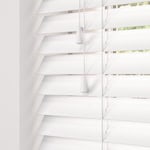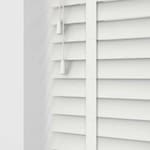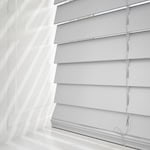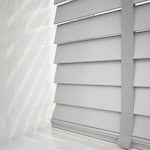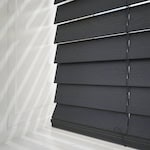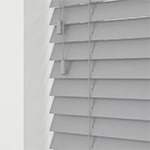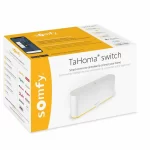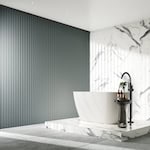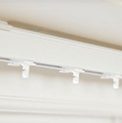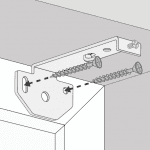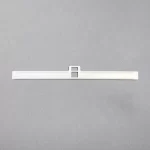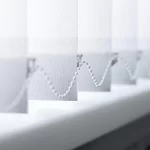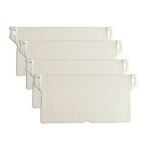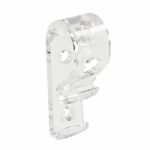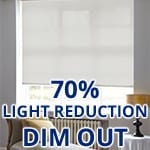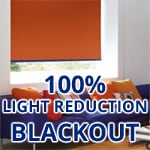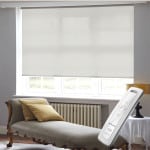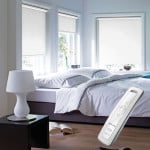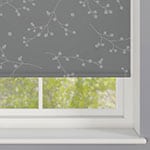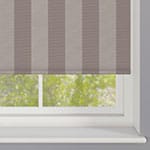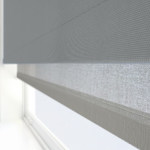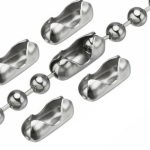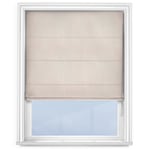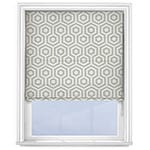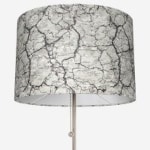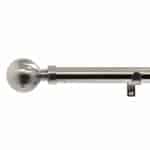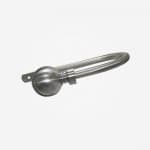Comprehensive Guide to Wooden Venetian Blinds: Top Questions Answered
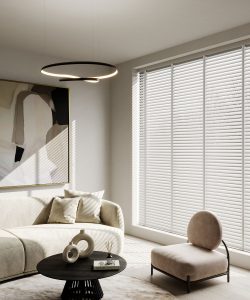
Wooden Venetian blinds are a popular choice for homeowners looking to enhance their interior decor with a touch of elegance and functionality. These blinds offer a perfect blend of aesthetics and practicality, making them an excellent investment for any home. However, choosing the right wooden Venetian blinds involves considering various factors, from material quality to installation and maintenance.
To help you make an informed decision, we have compiled answers to the most frequently asked questions about wooden Venetian blinds. Whether you’re curious about the benefits, types of wood, installation process, or maintenance tips, this comprehensive guide covers everything you need to know. Dive in to discover how wooden Venetian blinds can elevate your living space while providing excellent light control, privacy, and energy efficiency.
- What are the benefits of choosing wooden Venetian blinds over other types of window coverings? Wooden Venetian blinds offer a timeless aesthetic appeal, adding warmth and elegance to any room. They provide excellent light control and privacy, are durable, and can enhance the energy efficiency of your home by providing insulation. Additionally, wooden blinds are versatile and can complement various interior design styles.
- How do wooden Venetian blinds compare to faux wood or aluminum blinds in terms of aesthetics, durability, and cost? Wooden blinds are renowned for their natural beauty and high-end appearance. Faux wood blinds are more resistant to moisture and typically cost less, making them suitable for bathrooms and kitchens. Aluminum blinds are the most affordable but lack the warmth and richness of wood or faux wood.
- What types of wood are typically used in wooden Venetian blinds, and how does the type of wood affect their quality and price? Common woods used include basswood/paulownia, oak, cherry, and mahogany. Basswood/Paulownia is popular for its lightweight and affordability. Hardwoods like oak and cherry offer superior durability and a luxurious look but come at a higher price. The type of wood influences the blind’s weight, durability, appearance, and cost.
- How do you measure your windows accurately to ensure a proper fit for wooden Venetian blinds? To measure for wooden Venetian blinds, use a steel tape measure for accuracy. Measure the width at the top, middle, and bottom of the window and record the narrowest width. For height, measure from the top to the bottom at the left, middle, and right, using the longest measurement. For inside mounts, provide exact dimensions; for outside mounts, add extra width for better coverage. You can find a measuring guide here: Measuring Guide
- What are the different styles and finishes available for wooden Venetian blinds? Wooden Venetian blinds come in various styles, including traditional, contemporary, and rustic. Finishes range from natural stains that highlight the wood’s grain to painted finishes in a spectrum of colors. Options also include different slat sizes (typically 25mm, 35mm, or 50mm), allowing you to customize the look to suit your décor. Wood Venetian blinds are also usually available with either cord or tape ladders. Both serve the same basic function but offer different aesthetic and functional benefits. Cord ladders are less noticeable, providing a cleaner, more minimalist look. This can be beneficial if you prefer the slats themselves to be the focal point. Tape ladders add a decorative element to the blinds. They are available in a range of colors and patterns, allowing for greater customization and the ability to make a bold design statement. If you prefer a sleek, unobtrusive look, cord ladders are a good choice. If you want to add a decorative touch and make your blinds stand out, tape ladders offer more design options. Consider how much light control and privacy you need. Tape ladders can provide better light blockage, while cord ladders may offer a bit more light flexibility.
- How do you install wooden Venetian blinds, and can it be done as a DIY project? Installing wooden Venetian blinds can be a DIY project if you have basic tools and skills. First, ensure you have the correct measurements. Mark and drill the brackets into the window frame or wall, place the headrail into the brackets, and secure it. Attach the valance and adjust the slats. Here is a link to some Fitting Instructions
- What maintenance and cleaning routines are recommended for wooden Venetian blinds? Regular dusting with a soft cloth or a vacuum with a brush attachment is essential. For deeper cleaning, use a damp cloth with mild soap and water, ensuring not to soak the wood. Avoid harsh chemicals and excessive moisture to prevent damage. Periodic maintenance helps preserve the blinds’ appearance and functionality.
- Are wooden Venetian blinds suitable for all rooms, including high-humidity areas like bathrooms and kitchens? Wooden Venetian blinds are ideal for living rooms, bedrooms, and offices but are not recommended for high-humidity areas like bathrooms and kitchens due to the risk of warping and mildew. For these areas, consider faux wood or moisture-resistant alternatives that offer similar aesthetics without the vulnerability.
- How do wooden Venetian blinds contribute to energy efficiency and light control in a home? Wooden Venetian blinds offer excellent insulation, helping to keep rooms warmer in winter and cooler in summer. Their adjustable slats allow precise control over light and privacy, reducing the need for artificial lighting and potentially lowering energy bills. This contributes to a more energy-efficient and comfortable home environment.
- Can wooden Venetian blinds be customized in terms of color, slat size, and other features? Yes, wooden Venetian blinds can be customized to match your décor. You can choose from various colors, finishes, slat sizes, and even add decorative tapes. Custom options allow you to create a unique look that complements your home’s style, ensuring a perfect fit and enhancing your interior design.
- What are the common problems with wooden Venetian blinds, and how can they be resolved? Common problems include warping, fading, and difficulty operating the blinds. Warping can be minimized by avoiding excessive moisture. Fading can be reduced by choosing lighter colour finishes and keeping the blinds out of direct sunlight. Operating issues often stem from damaged cords or mechanisms, which can be fixed by replacing the affected parts.
- How do wooden Venetian blinds impact indoor air quality, particularly for people with allergies? Wooden Venetian blinds can improve indoor air quality by reducing dust accumulation compared to fabric window coverings. However, they need regular cleaning to prevent dust buildup, which can trigger allergies. Using a vacuum with a brush attachment or a damp cloth for cleaning helps maintain a healthier indoor environment.
- What is the average lifespan of wooden Venetian blinds, and how does it compare to other materials? The average lifespan of wooden Venetian blinds is about 10-15 years, depending on the quality of the wood and how well they are maintained. This is comparable to or slightly longer than faux wood blinds and significantly longer than aluminum blinds, which typically last around 10 years.
- How do you choose the right wooden Venetian blinds to match your interior decor? Consider the color and finish that complement your room’s color scheme and furniture. Choose a slat size that fits the scale of your windows and room—larger slats for larger windows and smaller slats for smaller windows. Look for styles that match your overall decor, whether traditional, contemporary, or rustic.
- What are the environmental impacts of producing and disposing of wooden and Faux wood Venetian blinds? Wooden Venetian blinds made from sustainably sourced wood are an eco-friendly choice. The production process should minimize waste and use non-toxic finishes. At the end of their life, wood blinds can be recycled or composted if they are untreated. Choosing FSC-certified wood ensures responsible forest management. Many faux wood blinds are made from composite materials that include recycled PVC, wood pulp, or other synthetic materials. Using recycled content reduces the demand for virgin resources. Faux wood eliminates the need for harvesting natural wood, helping to preserve forests and reduce deforestation. Faux wood blinds are highly durable and resistant to moisture, warping, and fading. Their longevity means they need to be replaced less frequently, resulting in fewer resources consumed over time. At the end of their useful life, many faux wood blinds can be recycled. This helps divert waste from landfills and promotes a circular economy where materials are reused and repurposed.
- Are there any safety considerations, especially in homes with children and pets, regarding wooden Venetian blinds? Yes, corded blinds can pose a strangulation hazard to children and pets. Opt for cordless wooden blinds or those with safety features like cord cleats and tensioners. Ensure the blinds are securely mounted to prevent them from falling. Regularly check for and fix any loose parts to maintain safety.
- What are the typical price ranges for wooden Venetian blinds, and what factors influence the cost? Wooden Venetian blinds typically range from £30-£150 per window, depending on the size, type of wood, finish, and customization options. High-quality hardwoods and custom finishes increase the price. Installation costs can add to the overall expense if professional installation is required.
- Where can you buy high-quality wooden Venetian blinds, and what should you look for in a reputable supplier? High-quality wooden Venetian blinds can be purchased from home improvement stores, specialty window treatment retailers, and online stores. Typically, purchasing blinds from online stores will be most cost effective. Look for suppliers with good reviews, long warranties, and clear return policies. Ensure they offer customisation options and use high-quality, sustainably sourced materials.
- How do wooden Venetian blinds perform in terms of noise reduction and privacy? Wooden Venetian blinds offer decent noise reduction by providing an extra barrier that dampens sound. Their adjustable slats allow for flexible privacy control, letting you block outside views completely or let light in while maintaining privacy. Thicker slats offer better noise and privacy control.
- Are there any warranties or guarantees typically offered with wooden Venetian blinds? Most reputable suppliers offer warranties for wooden Venetian blinds, typically ranging from 1 to 3 years. These warranties often cover manufacturing defects, mechanisms, and sometimes the finish. Always check the warranty details to understand what is included and ensure proper maintenance to keep the warranty valid.

